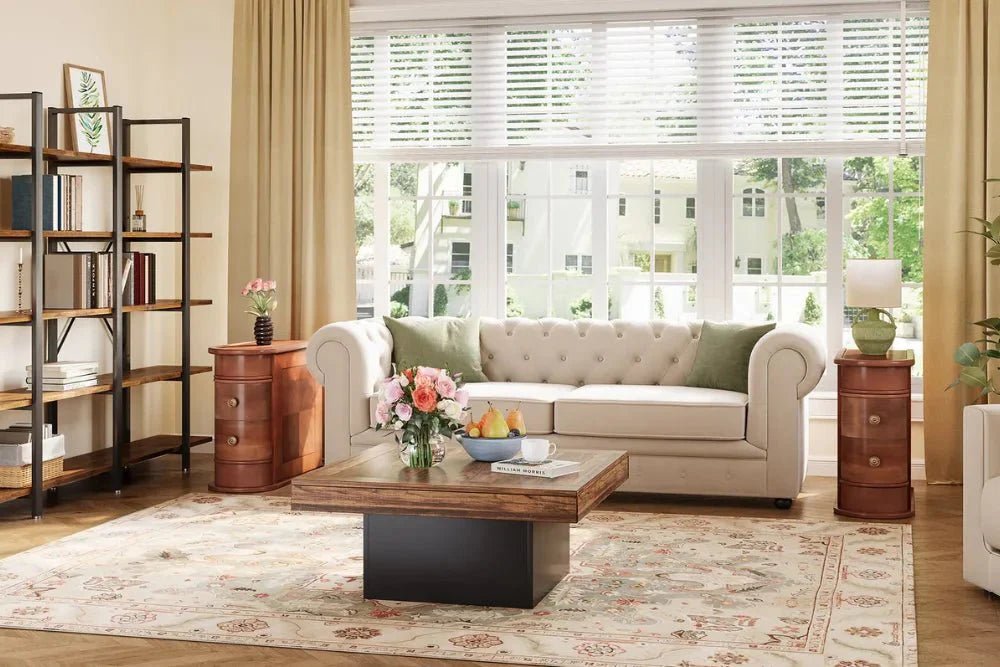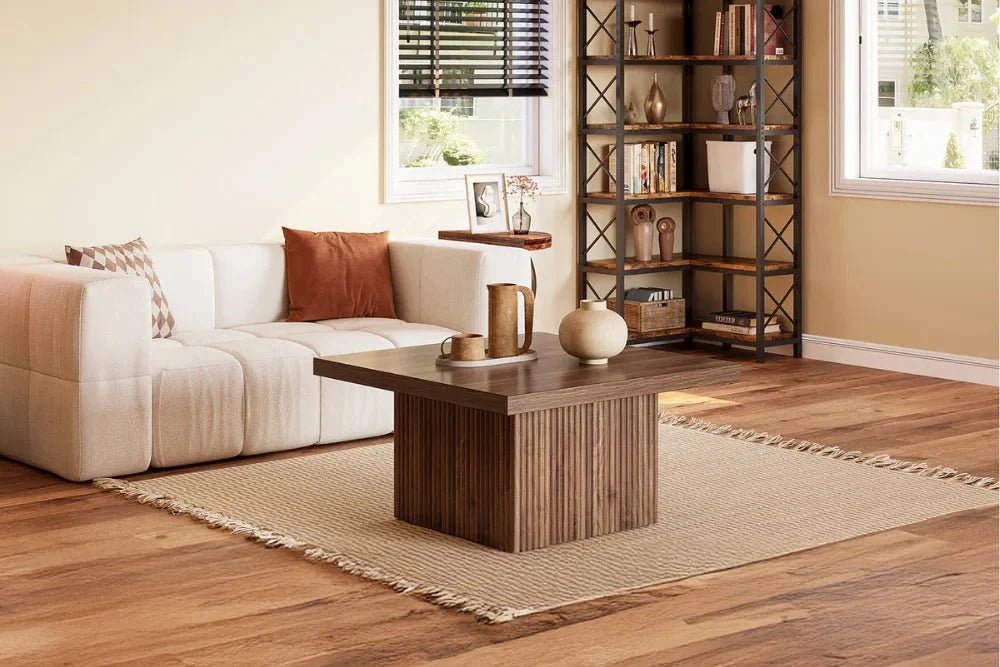A bathroom vanity is more than just a sink and cabinet—it’s the functional centerpiece of your bathroom, blending storage, style, and convenience. Whether you're renovating or building from scratch, choosing the right vanity can elevate your space while keeping clutter at bay.
Table of Contents
What Is a Bathroom Vanity?
A bathroom vanity is more than just a cabinet with a sink—it's the functional and visual centerpiece of your bathroom. It combines storage, surface space, plumbing concealment, and style, all in one cohesive unit.

Core Functions of a Vanity:
- Storage: It keeps your daily essentials—like toiletries, makeup, hand towels, and cleaning supplies—neatly tucked away while staying within easy reach.
- Plumbing Concealment: A vanity hides pipes and drains to give your bathroom a clean, finished look.
- Design Statement: From sleek modern to rustic farmhouse, the vanity helps define your bathroom’s overall style and mood.
- Added Resale Value: A well-designed vanity can increase your home’s appeal to buyers by making the bathroom look polished and functional.
Most bathroom vanities come as an integrated setup, typically including:
Countertop: Materials like quartz, granite, marble, laminate, or solid surface. Choose based on durability, water resistance, and overall design.
Sink:
- Undermount: Clean look, easier to wipe down
- Drop-in: Simple to install, rim sits on top
- Vessel: Bold and decorative, sits above the counter
Cabinet or Base: Constructed from solid wood, MDF, or engineered wood, available in wall-mounted or freestanding styles.
Hardware & Fixtures: Includes drawer handles, knobs, faucets, and optional add-ons like soft-close drawers, built-in lighting, or mirrors with LED backlighting.
Types of Bathroom Vanities
Below, we’ve broken down the main types of vanities by installation and style to help you find the perfect fit for your bathroom.
When choosing a bathroom vanity, it’s important to consider more than just style—you’ll want to think about how it’s installed and how it functions in your space. From compact corner models to wall-mounted vanities with a floating effect, each type offers its own blend of form and functionality.
1. By Installation
|
Type |
Best For |
Pros |
Cons |
|
Freestanding |
Traditional bathrooms |
Easy to install, ample storage |
Takes up floor space |
|
Wall-Mounted (Floating) |
Small bathrooms, modern designs |
Sleek look, easy to clean underneath |
Requires strong wall support |
|
Corner |
Compact bathrooms |
Utilizes unused space |
Limited counter space |
2. By Style
- Modern – Clean lines, matte finishes, floating designs
- Traditional – Raised-panel doors, ornate hardware
- Farmhouse – Distressed wood, apron-front sinks
- Industrial – Metal frames, open shelving
Pro Tip: Match your vanity style to your home’s overall aesthetic for a cohesive look.

Choosing the Right Materials
|
Material |
Best For |
Durability |
Maintenance |
|
Solid Wood |
Traditional, farmhouse |
High (if sealed) |
Needs regular sealing |
|
MDF (Engineered Wood) |
Budget-friendly |
Moderate (avoid water exposure) |
Easy to clean |
|
Marble/Quartz |
Luxury bathrooms |
Very durable |
Requires sealing |
|
Metal (Stainless Steel) |
Modern, industrial |
Rust-resistant |
Shows water spots |
Key Takeaway: If your bathroom gets humid, opt for water-resistant materials like quartz or marine-grade plywood.
How to Pick the Bathroom Vanity Size?
Choosing the right vanity size isn’t just about what fits—it’s about what functions best in your space. Here's how to get it right:
Single-Sink Vanities (24–48") Best for: Guest bathrooms, smaller full baths, or apartments. Tip: A 36" single vanity offers ample storage while saving space.
Double-Sink Vanities (60–72") Best for: Master bathrooms shared by two people. Tip: Look for wide drawers or cabinets between the sinks to maximize storage.
Compact Vanities (Under 24") Best for: Half-baths or powder rooms. Tip: Choose a wall-mounted or corner design to free up floor space.
Measure Before You Buy:
Height: Standard is 32–36", but go taller (up to 39") if you're above average height or want more ergonomic comfort.
Depth: 18–21" is standard; shallow-depth (under 18") options are great for narrow bathrooms.
Width: Always leave 2–3" of clearance on each side if placing near walls or other fixtures.
For Smart Space:
Floating Vanities: Make the room feel more open and airy—especially effective in modern designs.
Open-Shelf Designs: Great for towels and baskets while adding a stylish, breathable look.
Mirrored Cabinets Above: Increase vertical storage without expanding your footprint.
Before shopping, map out the vanity dimensions using painter’s tape on the floor and wall. This helps visualize how much room it’ll actually take up.
When choosing a vanity, consider your daily routine, storage needs, and available space. At Tribesigns, we offer modern vanities in a variety of sizes and colors. And with ample storage space, it's easy to keep your bathroom supplies stocked up.
Read more about the bathroom:
Bathroom Light Fixtures Buying Guide
Creating a Comfortable and Inviting Bathroom Space

FAQ
How Much Does a Bathroom Vanity Cost?
The cost of a bathroom vanity typically ranges from $200 to over $2,000. Budget-friendly options made from MDF or particleboard start around $200, while high-end or custom-built solid wood vanities with premium countertops can exceed $2,000.
Can I Install a Vanity Myself?
Yes—if you're comfortable with basic assembly, many freestanding bathroom vanities are easy to set up. At Tribesigns, our vanities come with step-by-step instructions, labeled parts, and all necessary assembly tools, making the process beginner-friendly.
However, connecting the plumbing (like sink and water lines) may require basic plumbing knowledge or professional assistance, depending on your setup. If you run into any questions during assembly, our customer support team is always here to help.
What’s the Best Countertop for Moisture Resistance?
Quartz countertops are the top choice for bathrooms due to their non-porous, stain-resistant surface. They’re durable, easy to clean, and perfect for humid environments. Other good options include solid surface or sealed granite.
What’s the Difference Between a Bathroom Vanity and a Bathroom Cabinet?
A bathroom vanity is a cabinet combined with a sink and countertop, designed for both storage and functionality. A bathroom cabinet, on the other hand, is usually used for storage only and doesn't include a sink or countertop.



